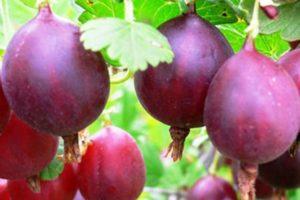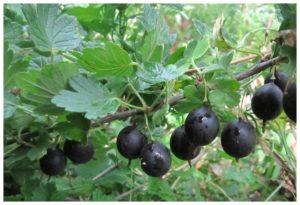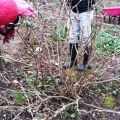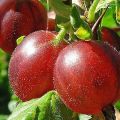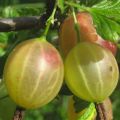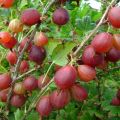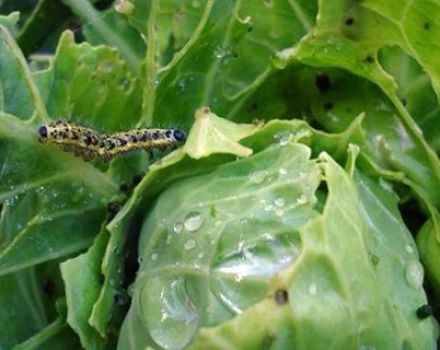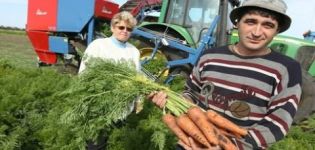Description and characteristics of the Kolobok gooseberry variety, planting and care
Gooseberry is a tasty and healthy berry, the popularity of which among summer residents only increases with each Goth. The only problem of the berry, because of which it is reluctant to plant it on the site, is the large number of thorns growing on the bushes. Unfortunately, not many people know that more than 40 years ago the Kolobok gooseberry variety was bred, the bushes of which do not have thorns. Let's take a closer look at this miracle of selection and find out how best to grow it.
Breeding history of the variety
The gooseberry variety Kolobok appeared for the first time in 1977, by crossing two crops popular at that time - Smena and Pink 2. Due to its unpretentiousness and taste, it became popular almost throughout Russia. Thanks for such a successful experiment should be the famous scientist-breeder Popova I.V., thanks to whose works many wonderful varieties of gooseberries were born, which are in demand to this day.
Description and characteristics of the Kolobok variety
Describing the Kolobok gooseberry variety, I would like to pay special attention to the following characteristics:
- the appearance of the bush;
- taste and appearance of berries;
- yield;
- ripening terms;
- resistance to subzero temperatures;
- protection against diseases and pests;
- rigidity.
Note! The gingerbread man is not considered the best representative among the gooseberry varieties, but in terms of the combination of positive qualities it is not inferior to its competitors.
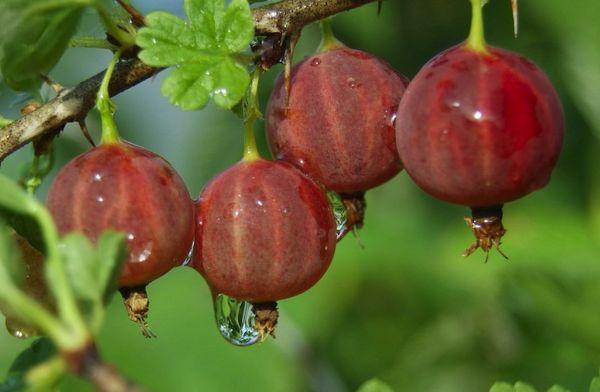
External parameters of the bush
By the totality of external parameters, Kolobok has average indicators:
- height - average;
- in length the bush develops up to 1.5 meters;
- spreading - medium;
- the degree of crown thickening is slightly above average;
- leaves are large, saturated green;
- leaf petioles are short, and they grow either individually or in small groups, 3-4 pieces each;
- there are very few spines, and those that do exist are short and weak. It is very difficult to prick about them.
Keep in mind that the shoots on the branches grow quickly and the bush needs systematic pruning.
Taste and description of fruits
The berries have a pleasant taste, with a slightly sour taste. They are equally pleasant to use both fresh and as compote or jam. The berries are quite weighty and juicy.The weight of one ranges from 4 to 8 grams. The shape of the berries is round, smooth. The skin is dense, with clear signs of a waxy coating, and its color ranges from cherry to dark red spectrum.
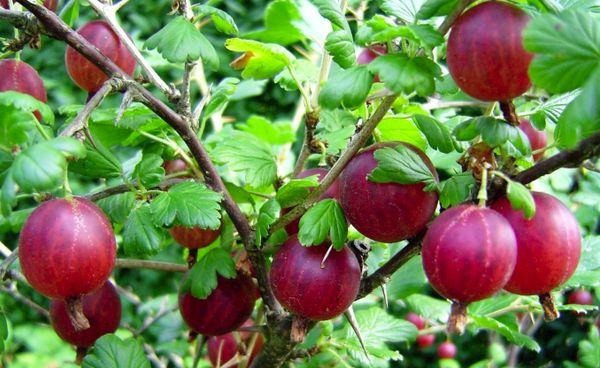
The gooseberry variety Kolobok tolerates long-distance transportation without losing its original appearance. The berries contain a large amount of vitamins, the groups are especially distinguished:
- FROM;
- E;
- AT 3.
Besides vitamins, Kolobok is rich in potassium. There are about 250 grams of potassium per 100 grams of the product.
Ripening time and yield
Experienced summer residents share the following figures regarding the ripening time and yield:
- From one bush, depending on the quality of care for it, from 4 to 10 kilograms of product are collected.
- According to the ripening period, it belongs to mid-season crops.
- Most of the crop is concentrated on branches between 1 and 2 years old.
- The first fruits appear early.
- The bush bears fruit systematically, over the course of many years of life.
- Ripening of berries occurs in the first half of July, continuing until the end of summer.
Resistant to freezing temperatures and droughts
Frost resistance is good, which makes it possible to grow crops even in the northern regions. Problems can arise with sharp thaws that interrupt the life rhythms of the bush. If in your region the change of seasons is abrupt, without smooth transitions, think about purchasing another gooseberry variety.

A short-term drought is tolerated normally, but you should not leave the bush without water for a long time. Water it periodically and a good harvest will be your reward.
Immunity to diseases and pests
Possesses strong immunity, and is not afraid of most diseases inherent in the culture. It is especially resistant to:
- powdery mildew;
- anthracnose;
- phytophthora.
Of course, throwing gooseberries to the mercy of fate is not worth it. Check plantings from time to time by removing damaged or infested parts. If you adhere to these principles, problems should not arise.
Pros and cons: is it worth growing in the garden?
Experienced gardeners distinguish among the indisputable advantages:
- high immunity;
- good adaptation to the ground;
- early terms of fruiting. With proper care, the bush begins to bear crops from 3-4 years of age;
- good regeneration rates.

Disadvantages:
- sensitivity to prolonged drought;
- poor tolerance to sudden temperature changes. It is balanced by high rates of regeneration, but the probability of the death of the bush is high;
- the need for systematic pruning and shaping.
Accordingly, if there are no sudden changes in temperature in your area, and you can devote time to pruning the bush, there are no obstacles to growing gooseberries in the garden. With proper care, it has a presentable appearance that does not spoil the overall landscape.
Growing tips
Experienced gardeners who have been breeding this culture for a long time recommend paying attention to the following things when growing:
- choice of landing site;
- adherence to landing dates.
Both points have a great influence on the formation and development of gooseberries. Take them seriously if you want to get a positive result.
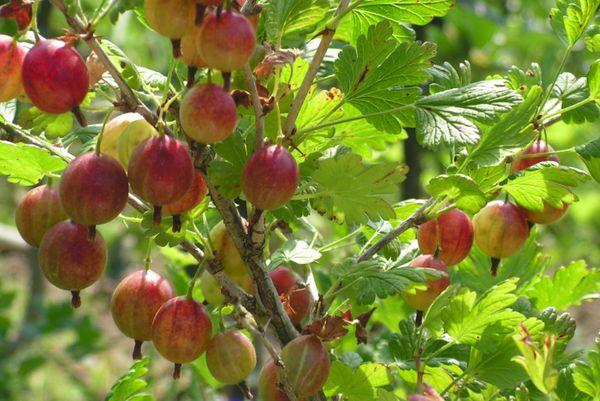
Soil and site selection for planting
When choosing a landing site, be guided by:
- the landing site must have good access to the sun;
- gooseberries love open spaces.
Fertile soil:
- loamy;
- sandy loam;
- clayey.
Not suitable for breeding:
- wetlands;
- podzolic soils;
- soils with high acidity.
If there is no other choice, the acidity of the soil is reduced by adding:
- chalk;
- dolomite flour;
- limestone.

Note! Additives to reduce the acidity of the soil are applied at least 1 year before planting.
A month before planting, the soil is plowed, all weeds are removed, after which the surface is leveled with a rake, and large clods of earth are broken.
Landing time and scheme
Kolobok gooseberries are planted either in spring or in autumn. For spring planting, they choose the second half of March, early April. Autumn planting is performed in September. This will allow the plant to adapt to the new location and prepare for wintering. Choose the fall option whenever possible. It will make it easier for the plant to adapt, and you will have to spend less energy on caring for it.
Bushes are planted in specially prepared pits, the diameter and depth of which is at least 45 centimeters. The following landing patterns are used:
- 2 x 1.5 meters;
- 1.7 x 1.7 meters.
It is not worth planting closer. Severe constraint will affect future crops.
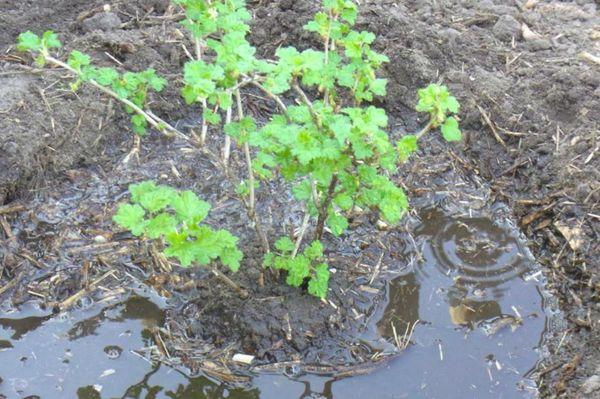
Care rules
Gooseberry is not a very demanding plant, but the minimum care rules are still required. It is worth paying attention to:
- loosening the soil;
- irrigation and feeding of bushes;
- pruning and shaping;
- fight against diseases and parasites;
- preparation for wintering.
All these actions will not take much of your time, but they will become a guarantor of crop safety and high yield rates.
Loosening the soil
Loosening of the soil is necessary after:
- fertilization;
- irrigation.
This will allow water and nutrients to better penetrate the soil. If the ground around the bush is covered with a layer of mulch, it is allowed to reduce the frequency of loosening, but it is definitely not worth throwing this activity. In such cases, loosening is done while replacing the old mulch with a new one. In addition, during the loosening process, weeds are removed that interfere with the normal formation of the bush.
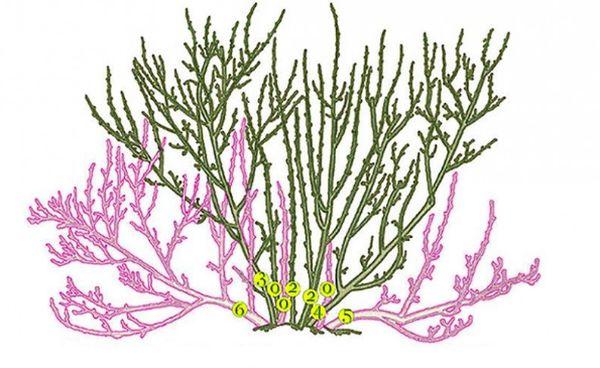
Frequency of irrigation and feeding of the bush by seasons (table)
In the first years of life, gooseberries are picky about feeding and irrigation. If you decide to plant it for the first time, pay attention to the following table.
| Spring | Summer | Fall | Winter | |
| Irrigation | Moderate, persistent | Moderate, persistent | Moderate, persistent | Not required |
| Top dressing | Before bud break Before flowering | Before fruiting | In preparation for the winter season | Not required |
Irrigation of gooseberries must be carried out constantly, avoiding strong drying out of the soil or stagnation of moisture. A long drought threatens the following consequences:
- the skin on the berries will begin to burst;
- the bushes will begin to dry out.
Excessive moisture threatens root decay and culture death.
The first spring feeding is carried out in March, the second in May. Both mineral and organic fertilizers are suitable. Summer feeding is carried out 1 time at the end of June, beginning of July. Autumn feeding is carried out in the second half of September or early October. Fertilizers with a high content of phosphorus and potassium are suitable.
Pruning and shaping the bush
Gooseberry pruning is best done in early spring, in the first half of March. This will give the bush a beautiful shape and spur growth. The problem is that the growing season starts very early. If you did not have time to prune before the first leaves appear, postpone pruning until autumn.
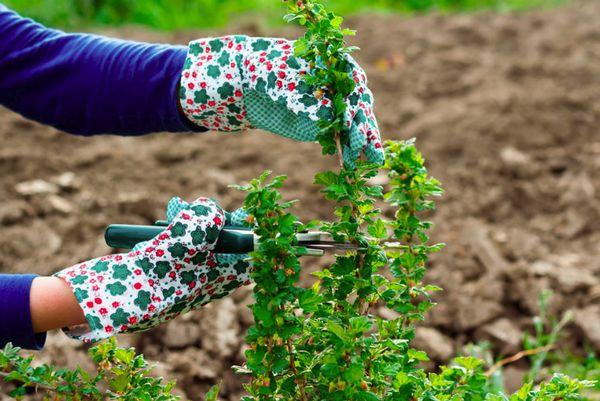
In autumn, first of all, old and horizontally growing shoots are removed. During the summer, it is allowed to remove damaged or pest-infested branches.
Disease and pest control
Despite the immunity to common gooseberry diseases, there are several types of pests that can cause significant damage to it. These include:
- aphid;
- glass case;
- spider mite;
- sawfly;
- gooseberry moth.
To destroy them, "folk remedies" are enough, and in neglected cases, chemicals sold in specialized stores will come to the rescue.
Cooking gooseberries for the winter
Preparing a bush for wintering consists of the following stages:
- branches are gathered together, after which they are neatly tied with a rope in several places;
- the soil around is dug up and fertilized;
- the land around is mulched;
- young bushes are covered with any covering material.
In severe frosts, you can pour as much snow as possible on the planting site. This will give the bushes additional protection.
